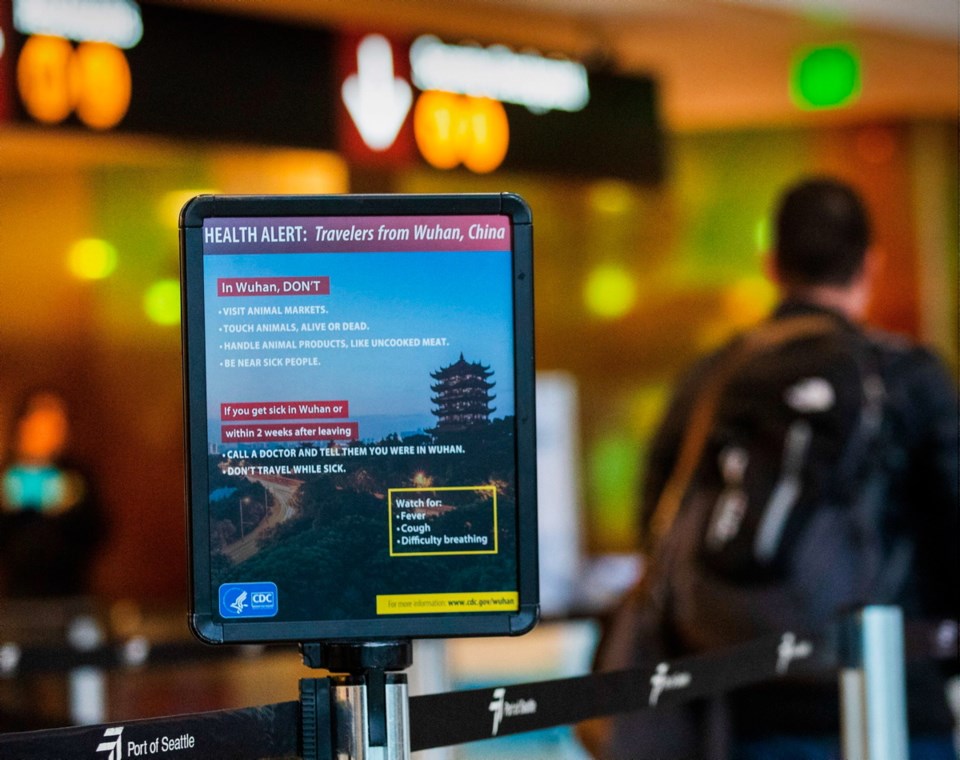It is clear that the coronavirus outbreak that began last October in the Chinese city of Wuhan cannot be contained. Cases have been reported in at least 18 countries, including a handful in Canada, one of them a Vancouver man who recently returned from China.
These numbers will grow in the days ahead.
There are differing views as to how many people have been infected, worldwide. However, some experts put the number at about 100,000, though the government of China has admitted to far fewer. More than 170 deaths have been reported.
It is not known how this new strain of virus arose, but its symptoms resemble those of the flu — fever, dry cough, sore throat and headache.
More severe reactions can involve difficulty breathing and pneumonia in both lungs.
The World Health Organization has declared an international emergency.
The question is what should be done.
Air Canada has suspended flights to Beijing and Shanghai. Screening programs have been set up at airports in Vancouver, Toronto and Montreal, though health officials are skeptical about their value. One problem is that it appears infected individuals can pass on the disease before symptoms emerge.
There is also a concern that the virus may be more contagious than had originally been thought. The latest research suggests infected individuals can pass the disease on to between 1.5 and 3.5 people they come in contact with.
Though putting that in context, someone with measles, the most infectious disease, can pass it on to 14 other people.
Fortunately, our health-care system has learned from past experience how to deal with such threats.
As far back as records exist, there have been worldwide pandemics every 10 to 40 years. Three occurred in the last century.
The Spanish flu killed an estimated 20 million to 50 million people between 1918 and 1919. The Asian Flu of 1957 caused two million fatalities, while the Hong Kong flu resulted in one million deaths in 1968.
In each of these instances, national health services were caught off guard, and were slow to respond. We saw this happen again during the SARS crisis in 2003.
SARS is a relative of the coronavirus. It causes the same symptoms. And outside Asia, where it originated, Canada was hardest hit.
There were 44 deaths in our country, including a doctor and a nurse. In the aftermath, a commission of inquiry concluded that hospitals had neglected basic precautions, including the wearing of masks and gloves, and isolating patients with respiratory symptoms.
There was also inadequate sharing of information, both among health facilities across the country, and with the public. The resulting panic nearly shut down Toronto and caused billions of dollars in economic losses.
In effect, fear generated by misinformation and outright rumour-mongering caused more damage than the disease itself.
It seems unlikely this experience will be repeated as the coronavirus spreads.
After the SARS outbreak, the Public Health Agency of Canada was set up, its primary mission being to monitor pandemics and co-ordinate between health-care agencies.
The B.C. Centre for Disease Control plays a similar role within our province. Along with the provincial Health Ministry, it has a full-scale strategy worked out to allow for instant communication should the need arise.
One aspect of the strategy is that health authorities have been told to route inquiries to the Centre for Disease Control.
It is essential, if an outbreak should expand, that the health-care system speaks with one voice.
There are also common-sense steps that each of us can take. Wash your hands frequently.
See a physician if you develop flu-like symptoms.
Health officials say it’s not necessary to wear a mask unless you feel ill.
And visitors to or from the Wuhan area should be on the alert. Go to a doctor immediately if you have difficulty breathing.
The chances are good this will not be a damaging pandemic. So far at least, the symptoms mostly resemble those of a mild to medium-strength cold.
Although this is an infectious disease, it does not appear to be unduly dangerous.



